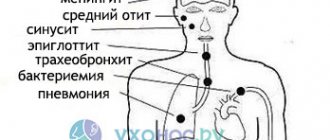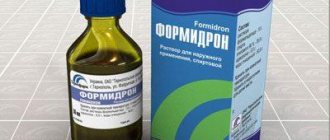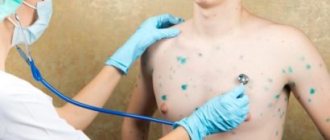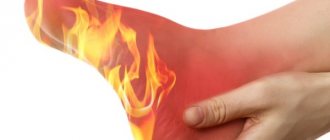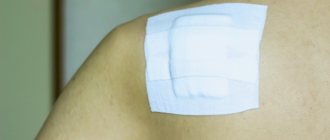- I. Mosquitoes are carriers of diseases
- II. Temperate climate mosquitoes
- Symptoms of a mosquito bite
- Allergy to mosquito bites
- How dangerous is the malaria mosquito?
- What to put on mosquito bites?
- Folk remedies
For the average resident of Russia, a mosquito bite means a slight itch and a disappearing rash. In most regions of Russia, especially Western Siberia and the Arctic, mosquitoes greatly annoy people during the period of mass flight. There are known places where mosquitoes are carriers of infection.
I. Mosquitoes are carriers of human diseases
Diseases associated with bites are malaria, fevers, encephalitis, and some helminthiases. Imported and local forms of diseases are registered in Russia.
According to WHO, malaria alone sickens up to 200 million annually and kills up to 600 thousand people worldwide.
The introduction of the pathogen into the human body occurs after a mosquito punctures the capillary of a blood vessel. Diseases transmitted by arthropods are called vector-borne diseases.
Infection of a person through the bite of bloodsuckers occurs in:
- tropical countries – year-round;
- temperate regions - seasonally, if
- the average daily air temperature is above 16-20°C, lasting up to 35 days in a row;
- there are wet biotopes for the development of mosquito larvae;
- inhabited by susceptible animals that feed mosquitoes.
The danger of vector-borne diseases is as follows:
- a person does not notice a mosquito bite;
- the first symptoms of the disease may not appear for a long time;
- Diagnosis of unusual diseases is difficult for doctors in prosperous regions;
- treatment has its own peculiarities (antibiotics are useless for protozoal, viral, helminthic diseases; antibiotics are used as adjuncts for some transmissible helminthiases, for example doxycycline).
The causative agents of diseases transmitted by mosquitoes have a different biological nature:
Protozoa, nosological form:
- malaria, its types - tropical, three-four-day fever, oval malaria.
Viruses, nosological forms:
- Yellow fever;
- Murray Valley Encephalitis;
- St. Louis encephalitis;
- Japanese mosquito encephalitis;
- Fevers (Ross River, West Nile, Tyagin, Dengue, Karelian).
Microorganisms, nosological form:
- Tularemia due to mosquito bite.
- Brugioz,
- Wuchereriosis;
- Human dirophyllariasis;
- Human setariasis.
Helminths (filariasis), nosological forms:
The list of diseases transmitted by bloodsuckers is not complete. Vector-borne diseases are widespread in countries of the subtropical and tropical zone (Africa, Asia, South and North America, Southern Europe). Mosquitoes in Central Asia (Tajikistan, Turkmenistan, Azerbaijan and others) are dangerous. In Russia, sporadic outbreaks of local vector-borne diseases are detected in the Southern, Central, and Siberian Federal Districts. Outbreaks of imported tropical diseases are recorded in any region of the country.
Recommendations on how to distinguish an anomaly mosquito
When visiting a disadvantaged region, remember!
- Mosquitoes are carriers of pathogens and belong to several genera and dozens of species. Mosquitoes of certain genera (species) are specific carriers of infections. However, it is impossible to distinguish a “malarial” mosquito from a “safe” one without special entomological training.
- Any insect (tick) bite in tropical countries should be considered a potential health hazard!
Recommendations on how to distinguish infectious diseases after mosquito bites
Monitor your health for three to six months after your trip to the tropics. Diseases transmitted by mosquitoes have common symptoms. Identification of three or more (see below), some time after visiting tropical countries, especially if the fact of a mosquito bite was recorded, is a reason to consult a doctor.
General signs of (protozoal, bacterial, viral) vector-borne diseases:
- The incubation period ranges from several days to two months after a mosquito bite.
- Manifestation of diseases in the form of:
- fever (increase in body temperature) of a constant, recurrent type, often this is a pathognomonic (main) sign;
- lesions of the brain and meninges in the form of stiffness of the neck muscles, headaches, disturbances of consciousness, vomiting, convulsions, epileptiform seizures, hyperkinesis, paresis, paralysis;
- Complications after illness in the form of deficits in the functions of the nervous system. Damage to other organs and systems is possible.
General signs of parasitic diseases - transmissible helminthiases:
- The incubation period after a bite and introduction of an invasive parasite larva into the human body is from 3 to 18 months;
- Clinical manifestations of the acute period of the disease in the form of lesions:
- lymph nodes, lymph stagnation, gigantism of body parts;
- eye with partial/complete loss of vision;
- subcutaneous tissue – migration of heartworms under the skin; a person feels the movement of the helminth under the skin;
- DEET, in concentrations from 1 to 50%. (minimum concentration – suitable for children, maximum – for adults in camping conditions).
- DMF - dimethyl phtholate, limited use - ineffective against ticks (impregnated with mosquito nets)
- IR3535 at a concentration of 10% is allowed for application to the skin of a child over one year of age.
Characterized by severe headaches, fever, and allergic skin rashes. Long-term carriage of helminths in the human body is observed in the absence of treatment.
What can you do to prevent mosquito bite infections?
Get a vaccine in advance, before your upcoming trip to countries with unfavorable epidemiological conditions, against dangerous tropical infections (yellow fever). The protective (protective) properties of vaccines take a long time to develop.
Current lists of countries affected by contagious human diseases, addresses of vaccination points in the regions of Russia, are updated annually and posted on the official website of Rospotrebnadzor.
In 2014, there are 35 vaccination points throughout Russia, which have conditions for vaccination against yellow fever.
The possibility of vaccination against other infections should be clarified with the regulatory authority.
Not all tropical diseases can be prevented by vaccination. Use personal protective equipment (repellents, insecticides, curtains, Pavlovsky mosquito nets, fumigators, electronic scarers) when visiting natural sites.
Normal precautions are an effective means of preventing contagious diseases.
Which repellent to choose?
Repellents are used to repel mosquitoes and ticks. Repellents are intended to be applied to skin and clothing. The active ingredient of mosquito repellents, one of three types:
Sometimes essential oils of plants (geranium, juniper, etc.) are used as repellents. The effectiveness of essential oils is much lower. Use only in city conditions.
Attention!
Individual intolerance to repellents, including herbal ones, is possible. Use ThermaCell electronic protection.
Repellents are available in the form of:
- aerosol - application to exposed skin and clothing;
- creams, milk, milk-spray, cream-gel – applied to the skin.
- electronic devices (do not contain DEET).
Popular repellent brands:
Raptor, Mosquitail, Gardex, OFF!, Reftamide, DEET, Komaroff, OZZ, Ultraton, ThermaCell - electronic portable devices, BagSTOP - mosquito repellent bracelets for children and adults. The best products effectively protect against mosquitoes for 4 to 8 hours.
When choosing a product abroad, to eliminate the risk of purchasing an insecticide under the guise of a repellent, be guided by the name of the active substance - DEET (DEET) or IR3535. Require a certificate and state registration of the product (possible in some countries). Buy repellents at pharmacies.
Which insecticide to choose?
Insecticides kill mosquitoes (insects). It is forbidden to apply them to the skin. Use only for treating outerwear in the form of coarse aerosols, spraying into indoor air in the form of ultra-low-volume aerosols.
Pyrethroid
Pyrethroid is the only group of modern insecticides. Pyrethroids are synthetic analogues of natural substances (pyrethrins) produced by the flowers of African chamomile species. A synthetic analogue, the active substance, is produced industrially in the form of an oily liquid under the trade names:
- Alpha-allethrin (English d-allethrin, Pynamin, d-allethrin, d-cisallethrin, Bioallethrin, Esbiothrin, Pyresin, Pyrexcel, Pyrocide, trans-allethrin);
- Transfluthrin (English: Baygon, Baythrin);
- Prallethrin or Etoc.
The preparations use low concentrations of active substances. When purchasing, be sure to pay attention to its concentration. Low - suitable for children and in normal conditions, high - for short-term use in harsh conditions in the jungle, savannah.
The active ingredients of insecticides (FOS), organophosphorus compounds (dichlorvos, chlorophos, karbofos), DDT dust are prohibited!
Insecticides are commercially available in the following formulations:
- Liquid, processing of outerwear, open spaces, premises;
- Plate for electrofumigators, spraying insecticides in the form of ultra-low-volume aerosols in rooms;
- Aerosol, spraying in the form of coarse aerosols indoors, on outer clothing.
Popular brands of insecticides and repellents are the same. There are brands that produce exclusively insecticides (Fumitox, Veles).
When choosing an insecticide abroad, as well as a repellent, be guided by the name of the active substance. Ask for a certificate, state registration for the purchased product. Buy insecticides from local pharmacies.
How to choose a mosquito canopy or Pavlovsky net?
Some tropical hotels provide mosquito nets to protect your bed, so be sure to use one. When going on an individual tour or a business trip to hot countries, take a portable bed canopy with you.
When choosing, focus on:
- weight;
- the quality of the material from which the network is made;
- cell size;
- seam strength.
Pavlovsky mosquito net
This is a simple device for individual use to protect the head, neck, and upper body. There are products on sale from different manufacturers. The mesh is impregnated with one of the repellents, usually DEET (diethyltoluamide) or (DMF) dimethyl phthalate (repudin).
Grid advantage
– light weight, there is no need to apply insecticides to clothes, or to change into special clothes. Certified meshes impregnated with a composition according to the recipe developed by Academician E.N. Pavlovsky, have a repellent property for up to two months. When visiting places with a high population density of midges, additionally use a mosquito net, a hat, and a mosquito net.
How to make a Pavlovsky mosquito net yourself?
Using knitting needles, from cotton (linen) yarn, knit a mesh cape in the form of a scarf, scarf, or collar. Choose yarn that is hygroscopic and absorbs moisture. Soak it in one of the repellents (see above) and dry it. Wear it on the child's shoulders over his clothes. If there is no need to remove the cape. Valid for up to 10 days after a single impregnation. If necessary, re-process. A certified net sold in retail stores has a longer repellent effect – up to 2 months.
How to make a mosquito net canopy for a baby stroller?
The material for the canopy can be thick gauze or a special mosquito net, sold in a store (online). Determine the required size, sew elastic and braid along the edge. Place it over the stroller and pull up the edges of the canopy to prevent it from getting in
The appearance of blisters
After a mosquito bite, a blister often appears on the skin.
It can have varying degrees of severity and swelling. It usually occurs in newborns, but can also occur in adults. This is how the immune system reacts to the puncture of the skin membrane and the penetration of mosquito saliva into the body. The blister itself can reach 1 cm. To remove such an unpleasant symptom as a blister, it is enough to treat it with an antiseptic and apply something cold to it.
Please note that watery globules after an insect bite should not frighten parents of infants. They go away immediately after proper medical care.
II. Temperate climate mosquitoes
With a small number of natural enemies feeding on insect larvae, the mosquito population in the Russian central zone, Western Siberia and the Arctic region reaches enormous sizes. Diptera (mosquitoes, midges, biting midges, horseflies, burner flies) form a community of blood-sucking insects that have a common name - midges.
Species of local mosquitoes may well be carriers of infections dangerous to humans. However, the development of pathogens in the mosquito and infection of humans does not occur. In most regions of the country, the sum of summer temperatures required for the development of the infectious agent in a mosquito is below the minimum limits. Necessary conditions for the development of infectious agents (see above).
The limiting factor for the spread of vector-borne infections in temperate and harsh climates is the short active life span of the mosquito.
How long does a mosquito live after being bitten?
The bloodsucker is exclusively a female mosquito. It uses blood as the main source of energy necessary for the development of fertilized eggs.
The mosquito development cycle consists of four stages:
- the egg is in the body of the female;
- larva – in a reservoir, four instars of mosquito larvae have been established;
- pupa – in a pond, moist substrate;
- imago (adult) - male (lymphophage - feeding on plant juices), female - obligate parasite, partially lymphophage.
The egg stage is the development of fertilized eggs, depends on the ambient temperature, at a temperature of 16°C it takes 2-4 days. This period is the lifespan of a mosquito after a bite.
Repeated activity of the mosquito in order to produce offspring is unlikely (there is no biological feasibility).
In the conditions of Western Siberia, only one generation (generation) of mosquitoes has been registered. In subtropical conditions - 3-4 generations, in hot countries up to 8-10 generations. In hot and temperate climates, the individual life expectancy of a bloodsucker does not differ significantly.
Information on the life expectancy of male and female mosquitoes (who have not received blood) in the summer from several days to four months.
The lower the ambient temperature, the longer the mosquito's lifespan.
Most of the time, mosquitoes, at low temperatures, are in an inactive state and do not take part in reproduction. For this reason, in cool climates, infectious agents do not develop. Vector-borne diseases that circulate for a long time in the fauna with the participation of susceptible wild and domestic animals are natural focal diseases.
Transmission of infection within a mosquito population occurs transovarially. This is a way of spreading an infectious agent inside the body when, when bitten by a sick person (animal), the pathogen is absorbed in the blood. After which, the infection passes into the eggs of the female mosquito, and successively passes into the larva (pupa), and completes development into the adult until:
- infective larva in helminth infections - a stage of the parasite that is infectious for a susceptible object (human, animal); other stages do not have the ability to infect.
- a full-fledged pathogen (protozoa, bacteria, viruses).
As a result, the entire next generation of adults are carriers of the infection.
How to get rid of mosquito bites once and for all?
Do you want to avoid being bitten by mosquitoes this summer and in the future? Installing a new Mosquito Magnet Pioneer mosquito trap will solve the problem of blood-sucking insects on your property until the end of the season!
The trap works by luring bloodthirsty female mosquitoes with a combination of carbon dioxide and the scent of Octenol bait. They imitate human breath and skin odor, which females associate with a food source. Carbon dioxide is produced during the conversion of household propane gas.
Mosquitoes fly to the trap and are sucked into it by a fan. In a strong nylon or plastic mesh they die within 24 hours from dehydration
Symptoms of a mosquito bite
At the time of the bite, the mosquito releases substances that are biologically foreign to the human body and prevent blood clotting. Blood sucking is one of the adaptations to parasitism, so for most people the bite and absorption of blood are invisible.
The first symptoms appear after some time in the form of: itching, burning, inflammation of local areas of the body. The symptoms of bites from infectious and sterile mosquitoes are practically the same.
Red spots after mosquito bites
The formation of small red blisters at the site of a mosquito bite is a natural response of the body. A blister is a variant of the primary rash, in the form of a small swelling on the skin that disappears without a trace within a short time.
Red spots and rashes that appear on the skin a long time after the bite are a reason to exclude an infectious, invasive disease. To exclude the cause of the rash, clinical examination, microscopy, allergic, and immunological methods are used.
Clinical observation:
The rash, characteristic of vector-borne diseases, is accompanied by fever, muscle pain, and head pain.
Laboratory methods:
- Blood test for malaria. A drop of blood is applied to a glass slide (thick drop method), the sample is examined under a microscope to detect plasmodium, the causative agent of malaria. Differentiation of the type of malaria is carried out in a thin layer of blood stained by the Giemsa method.
- Research to rule out allergies. Carry out using a skin test, determination of IgE reagins in the patient’s blood. A high level of reagins indicates helminthic infestation or atopic allergies or other pathologies.
Itching from a mosquito bite
Itching and burning are common accompaniments of a mosquito bite. Itching is relieved with solutions and gels when rubbed into the affected skin. It is better to use pharmacological drugs that are sold in pharmacies.
Attention!
For this purpose, do not use repellents, insecticides in the form of gels, creams and the like.
Often the squeak of a mosquito causes debilitating nervous itching in people, especially at night. For a comfortable stay indoors, including at night, use fumigators.
Recommendations for the use of mosquito fumigators
The principle of operation of the fumigator is based on heating and spraying the insecticide: on a plate or in liquid form. The safety of spraying an insecticide for humans is based on the particularly low dispersion of the substance in the environment. The process of thermal sublimation of insecticides occurs in the device from:
- electrical network (stationary version)
- pocket battery (portable, convenient for outdoor use)
Portable devices have been developed for individual wear, on the body in the form of bracelets, or compact devices attached to the belt. Such devices can be used while moving.
Recommendations on how to make a fumigator yourself
Required:
- stearic candle, matches;
- metal (tin) container;
- insecticide in liquid form (see above) and plain water.
A clean, empty tin can is suitable as a container. Dilute the insecticide with water in a ratio of 1:100, pour a small amount (5-10 ml) into a jar. Heat the jar with the insecticide solution using a burning candle. Complete evaporation of the insecticide (5-10 ml) is enough to kill mosquitoes that have flown into a tent (small room). Repeat the procedure if necessary. Ventilate the tent. Carry out the treatment at least three hours before bedtime.
Attention! Individual intolerance to the insecticide is possible. Install fumigators at a distance of more than one meter from the sleeping area.
Swelling after a mosquito bite
Mild swelling of exposed parts of the body is possible in a person who is not sensitive to allergens. With a massive mosquito attack, numerous swellings are possible, disappearing within one to two hours.
Extensive swelling, accompanied by suffocation, twilight consciousness, after a mosquito bite, or the use of an insecticide (repellent) is a sign of an allergy.
Infections after a bite
A huge number of people on the planet perceive a mosquito bite easily and without consequences. But this only happens if the mosquito itself was not infected. If after a mosquito bite a person develops strange symptoms, then the mosquito was a carrier of some kind of disease, for example:
- malaria,
- Zika virus,
- yellow fever
In these cases, only timely medical care can help the infected person.
Children are especially sensitive to the bites of blood-sucking insects. They have thin skin and symptoms of bites can appear for 3 months. It is expressed in suppuration, redness and swelling. To prevent this, lubricate the damaged area with brilliant green.
Allergy to mosquito bites
Increased sensitivity to mosquito bites is possible in adults and children. An adult who is susceptible to allergies is able to independently take action to prevent bites. An attack by midges (mosquitoes) on a child with delicate skin causes more negative consequences. Additionally, in some cases, a rash caused by a mosquito bite may be mistaken for an infection or allergy.
Reactions of adults to a mosquito bite
Some people who are hypersensitive react violently to bites. The reaction manifests itself quickly as:
- hives;
- vasomotor rhinitis;
- symptoms of bronchial asthma.
When signs of anaphylactic shock appear
(Quincke's edema) - put the patient to bed and immediately call an ambulance. Prednisolone intramuscularly or take orally one of the drugs in the form of dragees (tablets) that prevent the development of allergies - antihistamines of different generations:
- the first (Diazolin, Tavegil, Suprastin);
- second (Zodak, Parlazin, Zyrtec, Cetrin, Cetirizine);
- third (Claritin, Erius, Telfast).
Dose, maximum daily dose, possible side effects, contraindications are indicated on the drug packaging.
Children's reactions to mosquito bites
Normally, the mark of a mosquito bite disappears within a few hours if the bite site is not scratched. If you have any doubts about determining the type, the danger of the rash, the consequences for the body, compare different types of rashes.
Recommendations for differentiating rashes on a child’s body:
- Newborn acne
- microscopic yellow bumps appear from the first days of life, localization (forehead, chin, back), disappear by the second week of life; - Chickenpox
- a viral rash (caused by herpes zoster) begins in the form of a roseolous-vesicular rash, then a vesicle, localization (head, groin, mouth), accompanied by (fever, vomiting); - Atopic dermatitis
or diathesis (systemic allergy) redness on the cheeks occurs after eating berries, chocolate, and other foods.
Call an ambulance if there are rashes on the child’s body, combined with:
- increased body temperature;
- swelling of the face;
- pain of various kinds;
- difficulty breathing.
Pay attention to other symptoms that you think are dangerous. In other cases, consult your local pediatrician. To prevent mosquito attacks on a child, use mosquito repellents approved for use by children during walks in the fresh air - repellents based on IR3535 or essential oils of plant origin. In some cases, use DEET-based repellents with an active ingredient concentration of no higher than 1%.
Attention! There are age restrictions for children to apply repellents to their skin.
To prevent bites from children with allergies to chemicals, use your choice of:
- mosquito curtain over the bed, stroller;
- ThermaCell electronic devices;
- Pavlovsky mesh (the repellent does not come into contact with the skin, the mesh is easily removed, the repellent applied in advance does not disappear quickly, therefore the risk of allergies is much lower).
Consequences
Possible complications of untreated allergic reactions to mosquito bites:
- swelling;
- fluid-filled blisters;
- scarring;
- impetigo (pustular rash);
- inflammation of the subcutaneous tissue around the bite area;
- lymphangitis (inflammation of the lymphatic vessels);
- sepsis (general purulent infection).
Sometimes, if a person is bitten for the first time, there is no reaction, because the body has not yet formed a response to the foreign invader. Some people may not notice mosquito bites.
Allergic reactions are not the only problem associated with bites.
Insect-borne diseases have potentially life-threatening complications, although symptoms may only last a few days and may not seem serious.
Urgent medical attention is needed if the bites cause a severe reaction with the following symptoms:
- temperature 38.3 °C and above;
- rash;
- redness of the eyes;
- muscle and joint pain;
- weakness;
- headache;
- labored breathing.
Strange or unusual symptoms after exposure to mosquitoes or other insects should not be ignored. Timely consultation with a doctor will help avoid the development of dangerous diseases.
How dangerous is the malaria mosquito?
Malaria is brought into Russia every year by people who have visited southern countries. In 2013, two deaths were recorded in Russia. There was a time when malaria was eliminated in our country, and this disease was not remembered for a long time. A whole generation of doctors has grown up who have no idea about the disease. Therefore, in some cases, difficulties arise with timely diagnosis and treatment of the disease.
For treatment, use drugs from the pharmacological group - antimalarial drugs:
- Fansidar (Switzerland);
- Hydroxychloroquine (Canada);
- Hydroxychloroquine sulfate (China);
- Delagil (Poland or Hungary);
- Immard (India);
- Lariam (Switzerland);
- Plaquenil (UK).
All of the above specifically suppress the activity of plasmodia of malaria and other protozoa, and relieve the symptoms of malarial fever. The drugs are registered by Roszdravnadzor on the territory of the Russian Federation. Effective in prescribed doses. There are contraindications.
The danger is the formation of stable natural foci of malaria in the southern regions of Russia with the participation of mosquitoes and small rodents as their hosts.
Since the middle of the last century, only imported cases of all forms of malaria from foreign territories have been recorded in the USSR. Imported diseases did not have epidemic consequences. Since 1995, the situation has worsened due to the importation of three-day malaria into Russia from Azerbaijan and Tajikistan.
Currently, up to 80% of imported malaria is three-day malaria from Azerbaijan and Tajikistan. Tropical malaria is imported from Africa, and three-day malaria is imported from Asian countries.
Unfortunately, cases of local malaria, different from imported ones, have begun to be recorded in Russia. This means that there is a risk of the emergence of natural foci of malaria in the regions of the country. Isolated cases of local three-day malaria were recorded in the regions:
- Moscow;
- Lipetskaya;
- Nizhny Novgorod;
- Samara;
- Rostov;
- Orenburg;
- Sverdlovsk;
- Krasnodar region.
The greatest danger in the spread of three-day malaria - possible in Russian conditions - is represented by foci in the Republic of Dagestan and Azerbaijan. From non-CIS countries, the territories of the Asian continent can influence the formation of stable epizootic foci of malaria.
How do bedbugs bite?
First define:
- Which area of the body is affected (Under clothing or not, in what place near clothing.)
- Type and intensity of symptoms? (Bite size, redness, swelling, itching, pain, allergic reactions, shortness of breath?)
- Is it one bite or are there several or even many?
- Where did the attack take place? (outside or inside, summer or winter, day or night?)
Bedbug bites may initially be mistaken for bites from mosquitoes, midges, ticks or fleas. But in fact, they have a number of features that prevent them from being confused with other insect marks.
- Bed bugs love to make their own personal paths on the skin. Their traces are arranged in a certain order. Bed bug bites may form a line or appear in a zigzag pattern. They follow each other. As they are sometimes called: breakfast, lunch, afternoon snack, dinner.
- Bed bugs can bite anywhere on the body where there is skin. Typically in areas exposed during sleep, such as:
- neck
- face
- hands
- shoulders
- hands
- legs
Many people do not feel the bite itself or there are no obvious symptoms, except for the points where there was a small bite, as well as minor inflammation and irritation around it. People who are hypersensitive to stings will have more severe symptoms. In most cases, symptoms appear immediately after the bite, but they may develop or progress over the following days. Without further irritation, symptoms usually resolve within a week or so.
Almost all bed bug bites cause some degree of discomfort, usually itching and inflammation.
Other signs and symptoms of bedbug bites include:
- burning painful sensation
- raised, itchy bump with a distinct bite center
- red itchy bump with a dark center and a lighter swollen surrounding area
- small red bumps arranged in a zigzag or line pattern
- small red bumps surrounded by blisters
- papular rashes or areas of skin with raised or flat patches that may be inflamed
Confirmation that you have been bitten by a bedbug will be small blood stains from bites on sheets or bedding, reddish or reddish-brown dried spots on fabrics due to bedbug droppings, or white or transparent skins shed by nymphs as they mature.
What to put on mosquito bites?
If a mosquito has already bitten, use medications for external use that relieve unpleasant itching and burning. There is a large selection of drugs on sale in the form of gel, foam, and cream. Preparations in this group do not contain repellents or insecticides. The drugs used to relieve mosquito itching may not be drugs.
The best effect is achieved by pharmacological agents that are sold only in pharmacies. The main active ingredient of such drugs is dimethindene from the pharmacological group antihistamines.
Fenistil gel
The manufacturer of the drug is Novartis, Switzerland. Fenistil, the active ingredient dimethindene, is a blocker of histamine H1 receptors and has a calming effect. It is used to eliminate itching, urticaria and other phenomena of skin irritation; it is also used for allergic rhinitis. Fenistil is produced in two formulations: gel and drops.
Attention!
There are contraindications and individual sensitivity. Do not use in children under one year of age, restrictions for use during pregnancy. Do not apply to children on large areas of the body, do not apply to persons who require attention when performing responsible work (drivers, equipment operators).
To prevent mosquito bites from itching
The group of drugs recommended to protect the skin from itching after mosquito bites are not medications. Preparations from Mosquitail. Available in the form of spray-balm, foam-balm, gel-balm. All preparations are made on the basis of an antibacterial complex with silver ions. The effect is based on:
- rapid relief of itching and skin irritation;
- anti-inflammatory effect of components;
- calming property.
Preparations for the use of protection against mosquito bites based on herbal substances, recommended for children by Gardex Baby. The products are produced in the form of cream, cream-gel, pencil, foam, balm stick, and bracelet. The drugs also protect the baby's delicate skin from sunburn.
Allergic manifestations
Two to three days after an insect bite, it is recommended to check the damaged areas for an allergic reaction of the body.
It is characterized by thickening of the skin and discharge from the wound. If the allergic reaction is moderate, these symptoms may include dizziness, vomiting, diarrhea, pressure and pain in the chest and heart.
In severe cases, this may include suffocation, anaphylactic shock, confusion, or loss of consciousness due to obstruction of the airway.
For allergies, you can take an antihistamine: “Suprastin”, “Tavegil”, “Zirtek”, “Diazolin” and others.
If the allergy develops very quickly, it is better to administer these medications intramuscularly. But in order to neutralize the dangerous saliva of a mosquito, it may be necessary to administer Prednisolone.
Folk remedies for mosquito bites
If there are no ready-made medications on hand to protect against mosquitoes. Use one of the following to treat affected skin areas:
- balm Golden Star;
- table vinegar lotions;
- brilliant green;
- lemon juice;
- potassium permanganate in the form of a weak solution;
- mint leaf, plantain;
- aloe or calendula juice;
- a bag of tea, after brewing once;
- pieces of ice.
Soda for mosquito bites
Apply a cotton pad moistened with warm, boiled water to the baking soda poured into a clean bowl. Apply to the mosquito bite site for up to one minute. Repeat the procedure once a day. Skin swelling disappears after one or two procedures.
How to quickly help children if they are bitten by a mosquito?
Calamine lotion
Often parents notice that their child has been bitten by a mosquito. An adult is recommended to lightly brush the insect off the child's skin and, without wasting time, apply a cold compress to the bitten area to minimize swelling and itching. Any perfume or deodorant that contains aluminum chloride will make you feel better. To soothe baby's skin, Calamine lotion is good. Hydrocortisone lotions are used for the same purpose.
It is difficult for children not to scratch the bite site, but it is important to remind them not to do so to avoid infection. Parents should make sure that their child's nails are cut short so that they do not damage the skin.
If a child experiences symptoms such as fever, vomiting, or headaches after being bitten, contact a doctor immediately. Medical intervention will identify the possible development of infection and disease in the early stages.
Types of mosquitoes common in the CIS
Mosquitoes belong to the Diptera family; there are more than three thousand species of these blood-sucking insects in the world, and not all of them live in our regions. The most popular species found here are four types of mosquitoes.
culex
Culexes. Or the mosquitoes are real. The same individuals that do not allow us to sleep peacefully. This species is distributed throughout the world; people are more familiar with the small brown culex than with other blood-sucking insects.
biters
Biters. A tropical and subtropical insect that loves to live near people. Biters are distinguished from their “brothers” by white specks on their black body and legs. Some subspecies of this variety carry infections.
Anopheles
Anopheles. Well-known malarial mosquitoes, distributed throughout the world, except in regions with harsh climates (for example, Antarctica). This is a dangerous species for humans, since Anopheles are carriers of Plasmodium parasites.
karamory
Karamora. Or long-legged mosquitoes. Due to their large size and frightening appearance, many are afraid of these insects, often mistaking them for malaria mosquitoes. However, they are safe for humans, since caramoras feed only on plant nectar.
Why do mosquitoes bite people?
mosquito in nature
Not everyone knows that only females bite - human blood is necessary for laying eggs. And males are harmless creatures, they feed only on plant nectar. The Latin word for mosquito is culicidae, so an allergic reaction to the fluid of these insects is called culicidosis. Blood is important for female mosquitoes to obtain protein from it, which directly affects egg production. And the more blood, the more offspring the female will produce. Many people have noticed that mosquitoes bite one person often, and rarely bite another. Why this happens depends on the blood type, the characteristics of each person’s body, the state of health (for example, how often one sweats, mosquitoes simply stick to sweat) and on the foods taken in food. These factors influence insect reflectors.
